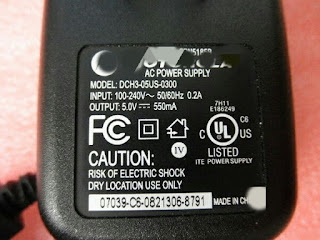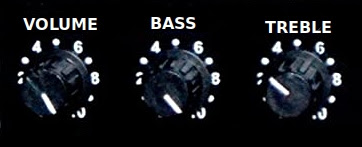MATTER AND ITS STATES (PHASE)
What is Matter:
Matter is anything that has mass and occupy space.
Example: wood,water,Oxygen etc.
All tangible things are made of matter.
How many states (phases) can a matter have in nature:
There are normally 3 states. Solid, liquid and gas. There exists another one, named Plasma state. In this post, this state is not described.
Every matter can be converted from any state to any state. Suppose, water. Water can be got as solid, liquid, or gas. We know solid form of water is called ice, liquid form is water, and gaseous form is water vapor.
How can the state of matter be changed:
The changing of the state of matter is known as Phase change of matter. We can change the state of a matter
- Varying the Pressure
- Varying the Temperature
1.Changing of phase by varying Pressure:
Increasing the pressure, gas can be converted into liquid and then solid. Similarly, solid can be converted into liquid and then gas.
 |
| Match lighter |
You may have noticed that the state of the fuel stored in the cylindrical drum of a match lighter is liquid. But, when this (fuel) is released, its state is gas.
What happens:
The gaseous fuel is stored in high pressure int the match lighter. Hence, its state is changed (i.e gas to liquid). When, the fuel is released i.e. pressure is decreased, its (fuel) state is also changed ( i.e. liquid to gas).
Same thing is happened in L.P.G. cylinder.
2.Changing of Phase by varying Temperature:
Decreasing temperature, gas can be converted into liquid and then solid.
Similarly, increasing temperature solid can be converted into liquid and then gas.
In real life , we have seen, if the temperature of the water is being increased, above certain temperature, it converts into gas (i.e. water vapor). Similarly, if the temperature is decreased to 0°C, water (liquid) is converted into ice (solid).
Now, you may have a question like following....
Why at room temperature is water liquid but oxygen gas:
It is seen that at room temperature water is as liquid; Oxygen is as gas and iron is as solid.
To understand the reason, first we have to study about Freezing Point, Melting Point, Boiling Point , Condensation Point.
Melting Point / Freezing Point:
Melting Point or Freezing Point refers a temperature. This is different for different matter. It is the temperature at which solid may be melted or liquid may be frozen.
At this temperature, if heat is given to the matter, the matter is converted to liquid from solid.
If heat is being absorbed at this temperature, the matter will be converted to solid from liquid.
EXAMPLE:
The freezing point / melting point of water is 0°C in normal pressure.
- Bellow the 0°C the state or phase of the water would be solid (i.e. ice).
- At 0°C, if heat is given the solid water (i.e. ice) starts melting. Although, the heat is being given, the temperature is not changed ( i.e. it remain 0°C) until all ice is melted completely.
- When all ice is converted into water(liquid) and heat is given further the temperature of the liquid water will be increased.
- If liquid water is kept at 0°C and heat is being absorbed, the liquid starts converting into solid. And the temperature remains 0° until all liquid water is converted completely into ice (solid water).
- If all liquid water are converted into ice and the heat absorbing continue further, the temperature of the ice will be decreased.
Boiling Point / Condensation Point:
Boiling Point / Condensation Point refers a temperature. This temperature is different for different matter. At this temperature liquid may be converted into gas or gas may be converted into liquid. If the liquid form of the matter is given heat at this temperature (boiling point), it would be converted into gas.
If heat is absorbed from the gaseous form of the matter at this temperature (condensation point), it would be converted into liquid.
EXAMPLE:
The boiling or condensation temperature of water is 100°C on normal pressure.
If heat is absorbed from the gaseous form of the matter at this temperature (condensation point), it would be converted into liquid.
EXAMPLE:
The boiling or condensation temperature of water is 100°C on normal pressure.
- Above 100°C the phase / state of the water be gas.
- Below 100°C the phase / state of the water be liquid.
- If heat is given to liquid water at 100°C, liquid water starts converting into gas. The temperature remains 100°C until all liquid water coverts into gas (water vapor).
- After complete conversion of liquid water into gas, heat is given further, the temperature of the gas will be increased (i.e. 101,.....102....103..).
- If heat is absorbed from gaseous form of water (water vapor) at 100°C, water vapor starts converting into liquid. The temperature remain 100°C until it is fully converted into liquid water.
- After complete conversion of water vapor into liquid water, if heat is absorbed further from that water, the temperature of the liquid water will be decreased (i.e. 99...98..97..).
Now, we have learnt about boiling, condensation, freezing,melting point. Now, we will know the answer of the last question.
Why at room temperature is water liquid but Oxygen gas?
| Water | Oxygen | Iron | |
| Freezing / Melting Point | 0°C | -218.79°C | 1538°C |
| Boiling / Condensation Point | 100°C | -183°C | 2862° |
The just above shows that
- if the temperature is above the Boiling / Condensation Point, the state of matter be gas
- if the temperature falls between Boiling / Condensation Point and Melting / Freezing Point, the state of matter be liquid
- if the temperature is below the Melting / Freezing Point, the state of the matter be solid.
Now, the room temperature is generally 20°C.
- 20°C falls between Boiling Point (100°C) and Freezing Point (0°) of water. Hence, at room temperature, the state of water is liquid.
- 20°C falls above the boiling point of Oxygen (-183°C). Hence, the state / phase of oxygen at room temperature is gas.
- 20°C falls below the freezing point of the iron (1538°C). Hence, in the room temperature, the phase / state of iron is solid.











I am thankful to this blog for assisting me. I added some specified clues which are really important for me to use them in my writing skill. Really helpful stuff made by this blog. Science and technology Blogs
ReplyDeleteThanks for Your Great post. MATTER AND ITS STATES more information
ReplyDelete